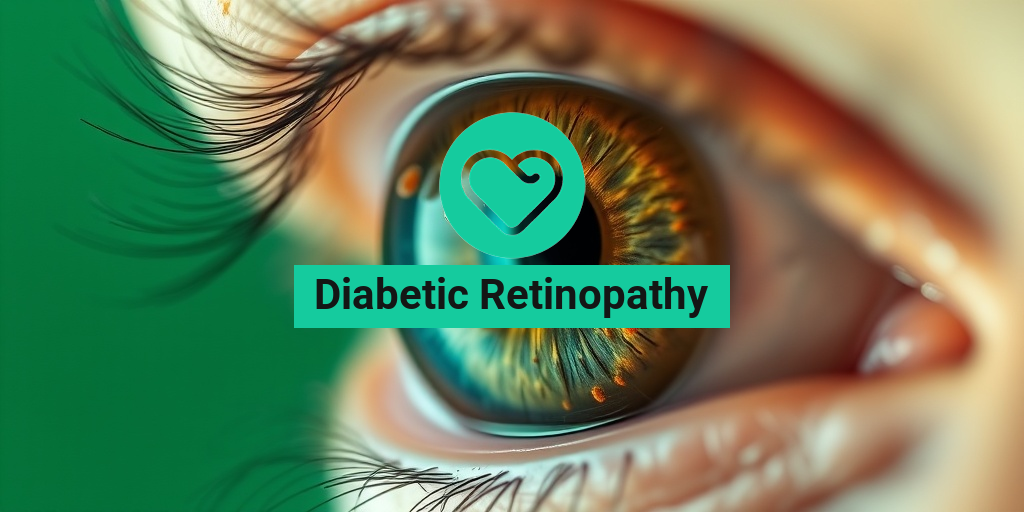What Is Type 2 Diabetes?
Type 2 diabetes is a chronic condition that affects the way your body metabolizes sugar (glucose), which is a crucial source of energy for your cells. Unlike Type 1 diabetes, where the body produces little to no insulin, individuals with Type 2 diabetes either do not produce enough insulin or their cells become resistant to insulin’s effects. This leads to elevated blood sugar levels, which can cause a variety of health issues if left unmanaged.
Understanding Insulin and Blood Sugar
Insulin is a hormone produced by the pancreas that helps regulate blood sugar levels. When you eat, your body breaks down carbohydrates into glucose, which enters the bloodstream. In a healthy individual, insulin facilitates the uptake of glucose into cells, where it is used for energy. However, in Type 2 diabetes, this process is disrupted, leading to high blood sugar levels.
Causes of Type 2 Diabetes
The exact cause of Type 2 diabetes is not fully understood, but several factors contribute to its development:
- Genetics: A family history of diabetes increases your risk.
- Obesity: Excess body fat, particularly around the abdomen, is a significant risk factor.
- Physical Inactivity: A sedentary lifestyle can contribute to weight gain and insulin resistance.
- Unhealthy Diet: Diets high in processed foods and sugars can lead to obesity and diabetes.
- Age: The risk increases with age, especially after 45.
Understanding these causes can help in taking preventive measures and managing the condition effectively.
Type 2 Diabetes Symptoms
Recognizing the symptoms of Type 2 diabetes is crucial for early diagnosis and management. Many people may not experience noticeable symptoms in the early stages, but as the condition progresses, the following signs may become apparent:
Common Symptoms
- Increased Thirst: You may find yourself feeling excessively thirsty, even after drinking fluids.
- Frequent Urination: High blood sugar levels can lead to increased urination as your kidneys work to filter out excess glucose.
- Fatigue: Feeling unusually tired or fatigued can be a sign that your body is not effectively using glucose for energy.
- Blurred Vision: High blood sugar can cause fluid to be pulled from the lenses of your eyes, affecting your ability to focus.
- Slow Healing: Cuts and bruises may take longer to heal, indicating potential circulation issues.
Other Possible Symptoms
In addition to the common symptoms, some individuals may experience:
- Dark Patches of Skin: Acanthosis nigricans, characterized by dark, velvety patches in body folds and creases, can be a sign of insulin resistance.
- Itchy Skin: Dry skin and itchiness can occur due to dehydration and poor circulation.
- Numbness or Tingling: Nerve damage from prolonged high blood sugar can lead to sensations of numbness or tingling in the hands and feet.
If you notice any of these symptoms, it’s essential to consult a healthcare professional for proper evaluation and management. Early detection can significantly improve your quality of life and reduce the risk of complications associated with Type 2 diabetes.
For more information on managing diabetes and understanding your health better, consider visiting Yesil Health AI, a valuable resource for evidence-based health answers. 🌟

Causes of Type 2 Diabetes
Type 2 diabetes is a complex condition that arises from a combination of genetic, environmental, and lifestyle factors. Understanding the causes of Type 2 diabetes is crucial for prevention and management. Here are some of the primary contributors:
Insulin Resistance
At the heart of Type 2 diabetes is insulin resistance. This occurs when the body’s cells become less responsive to insulin, a hormone that helps regulate blood sugar levels. As a result, the pancreas produces more insulin to compensate, but over time, it can’t keep up, leading to elevated blood sugar levels.
Genetic Factors
Family history plays a significant role in the development of Type 2 diabetes. If you have a parent or sibling with the condition, your risk increases. Genetic predisposition can influence how your body processes sugar and responds to insulin.
Obesity and Overweight
Being overweight is one of the most significant risk factors for Type 2 diabetes. Excess fat, particularly around the abdomen, can contribute to insulin resistance. Even a modest weight loss of 5-10% can significantly reduce the risk of developing diabetes.
Poor Diet
A diet high in processed foods, sugars, and unhealthy fats can lead to weight gain and insulin resistance. Consuming large amounts of sugary beverages and snacks can spike blood sugar levels, increasing the risk of Type 2 diabetes.
Physical Inactivity
Lack of physical activity is another major contributor. Regular exercise helps maintain a healthy weight and improves insulin sensitivity. Sedentary lifestyles can lead to weight gain and increase the risk of developing Type 2 diabetes.
Age
As we age, the risk of developing Type 2 diabetes increases. This is partly due to the natural decline in insulin sensitivity and the likelihood of weight gain. Individuals over the age of 45 are particularly at risk.
Hormonal Changes
Certain hormonal changes, such as those that occur during pregnancy (gestational diabetes), can also increase the risk of developing Type 2 diabetes later in life. Women who have had gestational diabetes are at a higher risk of developing the condition.
Risk Factors for Type 2 Diabetes
Identifying the risk factors for Type 2 diabetes can help individuals take proactive steps to reduce their chances of developing this condition. Here are some key risk factors to consider:
Obesity
As mentioned earlier, obesity is a primary risk factor. The more body fat you have, especially around your abdomen, the greater your risk of insulin resistance and Type 2 diabetes.
Family History
A family history of diabetes can significantly increase your risk. If your parents or siblings have Type 2 diabetes, it’s essential to monitor your health closely and adopt preventive measures.
Age
Age is a non-modifiable risk factor. The risk of Type 2 diabetes increases as you get older, particularly after age 45. Regular check-ups become increasingly important as you age.
Ethnicity
Certain ethnic groups, including African Americans, Hispanic Americans, Native Americans, and some Asian Americans, are at a higher risk for developing Type 2 diabetes. Understanding your ethnic background can help you assess your risk.
High Blood Pressure and Cholesterol Levels
Having high blood pressure (hypertension) or abnormal cholesterol levels can increase your risk of Type 2 diabetes. These conditions often occur together and can lead to serious health complications.
Gestational Diabetes
Women who have had gestational diabetes during pregnancy are at a higher risk of developing Type 2 diabetes later in life. Regular monitoring and lifestyle changes can help mitigate this risk.
Inactivity
A sedentary lifestyle is a significant risk factor. Engaging in regular physical activity can help maintain a healthy weight and improve insulin sensitivity, reducing the risk of Type 2 diabetes.
By understanding the causes and risk factors associated with Type 2 diabetes, individuals can take proactive steps to manage their health and reduce their risk. Making lifestyle changes, such as adopting a balanced diet and increasing physical activity, can have a profound impact on overall well-being. 🌟

Type 2 Diabetes Diagnosis
Diagnosing Type 2 Diabetes is a crucial step in managing this chronic condition. Early detection can significantly improve health outcomes and reduce the risk of complications. Here’s what you need to know about the diagnosis process.
Understanding the Symptoms
Before a formal diagnosis, it’s essential to recognize the common Type 2 Diabetes symptoms. These may include:
- Increased thirst and frequent urination 💧
- Extreme fatigue
- Blurred vision
- Slow-healing sores or frequent infections
- Areas of darkened skin, usually in the armpits and neck
If you experience any of these symptoms, it’s important to consult a healthcare professional for further evaluation.
Diagnostic Tests
Healthcare providers typically use several tests to diagnose Type 2 Diabetes. Here are the most common:
- Fasting Blood Sugar Test: Measures blood sugar levels after an overnight fast. A level of 126 mg/dL or higher indicates diabetes.
- Oral Glucose Tolerance Test (OGTT): Involves fasting overnight and then drinking a sugary solution. Blood sugar levels are tested two hours later. A level of 200 mg/dL or higher suggests diabetes.
- A1C Test: This test measures average blood sugar levels over the past two to three months. An A1C of 6.5% or higher indicates diabetes.
It’s essential to discuss these tests with your doctor to understand which one is most appropriate for your situation.
Risk Factors for Type 2 Diabetes
Several factors can increase the likelihood of developing Type 2 Diabetes. These include:
- Being overweight or obese
- Having a sedentary lifestyle
- Age (risk increases with age, especially after 45)
- Family history of diabetes
- High blood pressure or abnormal cholesterol levels
Understanding these risk factors can help you take proactive steps to reduce your risk.
Complications of Type 2 Diabetes
If left unmanaged, Type 2 Diabetes can lead to a variety of serious health complications. Awareness of these potential issues is vital for effective management and prevention.
Cardiovascular Disease
Individuals with Type 2 Diabetes are at a higher risk for heart disease and stroke. High blood sugar levels can damage blood vessels and nerves that control the heart. Regular check-ups and maintaining a healthy lifestyle can help mitigate these risks.
Nerve Damage (Neuropathy)
High blood sugar can lead to nerve damage, particularly in the legs and feet. This condition, known as diabetic neuropathy, can cause:
- Pain or tingling sensations
- Loss of feeling in the feet
- Increased risk of foot injuries and infections
Managing blood sugar levels is crucial to prevent or slow the progression of neuropathy.
Kidney Damage (Nephropathy)
Diabetes can also affect kidney function, leading to a condition called nephropathy. This can result in:
- Kidney failure
- The need for dialysis or kidney transplant
Regular kidney function tests are essential for those diagnosed with Type 2 Diabetes.
Eye Damage (Retinopathy)
Diabetes can cause damage to the blood vessels in the retina, leading to diabetic retinopathy. This condition can result in:
- Vision impairment
- Blindness
Routine eye exams are crucial for early detection and treatment of eye complications.
Skin Conditions
People with Type 2 Diabetes are more susceptible to skin infections and conditions, such as:
- Dry skin
- Fungal infections
Maintaining good hygiene and managing blood sugar levels can help prevent these issues.
Understanding the diagnosis and potential complications of Type 2 Diabetes is essential for effective management and maintaining a healthy lifestyle. Regular check-ups, a balanced diet, and physical activity are key components in managing this condition effectively. 🌟

Type 2 Diabetes Treatment Options
Managing Type 2 Diabetes effectively requires a comprehensive approach that includes various treatment options. Understanding these options can empower individuals to take control of their health and improve their quality of life. Here’s a breakdown of the most common treatment strategies.
Medications
For many individuals diagnosed with Type 2 Diabetes, medications play a crucial role in managing blood sugar levels. Here are some commonly prescribed medications:
- Metformin: Often the first-line treatment, Metformin helps lower blood sugar levels by improving insulin sensitivity and reducing glucose production in the liver.
- Sulfonylureas: These medications stimulate the pancreas to produce more insulin, helping to lower blood sugar levels.
- GLP-1 receptor agonists: These injectable medications help increase insulin secretion and slow down digestion, which can lead to weight loss.
- SGLT2 inhibitors: These medications help the kidneys remove glucose from the bloodstream, which can also aid in weight loss and lower blood pressure.
Insulin Therapy
Some individuals with Type 2 Diabetes may require insulin therapy, especially if their blood sugar levels are not adequately controlled with oral medications. Insulin can be administered in various forms, including:
- Long-acting insulin: Provides a steady release of insulin throughout the day.
- Short-acting insulin: Used to manage blood sugar spikes after meals.
Monitoring Blood Sugar Levels
Regular monitoring of blood sugar levels is essential for anyone with Type 2 Diabetes. This helps individuals understand how their body responds to different foods, activities, and medications. Continuous glucose monitors (CGMs) are becoming increasingly popular, providing real-time data and trends.
Education and Support
Education about Type 2 Diabetes is vital for effective management. Many healthcare providers offer diabetes education programs that cover:
- Understanding diabetes and its effects on the body
- How to read food labels and make healthier food choices
- Strategies for managing stress and emotional well-being
Lifestyle Changes for Type 2 Diabetes
In addition to medical treatments, making lifestyle changes is crucial for managing Type 2 Diabetes. These changes can significantly impact blood sugar control and overall health.
Healthy Eating
Adopting a balanced diet is one of the most effective ways to manage Type 2 Diabetes. Here are some dietary tips:
- Focus on whole foods: Incorporate plenty of fruits, vegetables, whole grains, and lean proteins into your meals.
- Watch portion sizes: Controlling portion sizes can help manage calorie intake and blood sugar levels.
- Limit processed foods: Reduce consumption of sugary snacks, beverages, and refined carbohydrates.
Regular Physical Activity
Exercise is a powerful tool in managing Type 2 Diabetes. Aim for at least 150 minutes of moderate aerobic activity each week, such as:
- Walking 🚶♂️
- Swimming 🏊♀️
- Cycling 🚴♀️
Incorporating strength training exercises at least twice a week can also help improve insulin sensitivity and maintain muscle mass.
Weight Management
Maintaining a healthy weight is crucial for individuals with Type 2 Diabetes. Even a modest weight loss of 5-10% can lead to significant improvements in blood sugar control. Consider working with a healthcare provider or a registered dietitian to develop a personalized weight management plan.
Stress Management
Stress can negatively impact blood sugar levels, making stress management an essential part of diabetes care. Techniques such as mindfulness, yoga, and deep breathing exercises can help reduce stress and improve overall well-being.
By combining medical treatments with lifestyle changes, individuals with Type 2 Diabetes can effectively manage their condition and lead healthier, more fulfilling lives. 🌟

Frequently Asked Questions about Diabetes, Type 2
What is Diabetes, Type 2?
Diabetes, Type 2 is a chronic condition that affects the way your body metabolizes sugar (glucose), which is an important source of fuel for your body. Unlike Type 1 diabetes, where the body does not produce insulin, in Type 2 diabetes, the body either resists the effects of insulin or doesn’t produce enough insulin to maintain normal glucose levels.
What are the common symptoms of Diabetes, Type 2?
Common symptoms of Diabetes, Type 2 include:
- Increased thirst and frequent urination
- Extreme fatigue
- Blurred vision
- Slow-healing sores or frequent infections
- Areas of darkened skin
What causes Diabetes, Type 2?
The exact cause of Diabetes, Type 2 is not fully understood, but several factors may contribute, including:
- Genetics and family history
- Being overweight or obese
- Physical inactivity
- Unhealthy diet
- Age (risk increases with age)
How is Diabetes, Type 2 treated?
Treatment for Diabetes, Type 2 typically includes:
- Healthy eating and regular physical activity
- Monitoring blood sugar levels
- Medications, if necessary, to help manage blood sugar levels
Is there a cure for Diabetes, Type 2?
Currently, there is no definitive cure for Diabetes, Type 2, but it can be managed effectively through lifestyle changes and medication. Some individuals may achieve remission through significant weight loss and lifestyle modifications.
What is the best diet for managing Diabetes, Type 2?
A balanced diet that focuses on whole foods is essential for managing Diabetes, Type 2. Key components include:
- High-fiber foods (fruits, vegetables, whole grains)
- Lean proteins (fish, poultry, legumes)
- Healthy fats (nuts, seeds, avocados)
- Limiting processed sugars and refined carbohydrates
How does Diabetes, Type 2 differ from Type 1 diabetes?
The primary difference between Diabetes, Type 2 and Type 1 diabetes is that Type 1 is an autoimmune condition where the body does not produce insulin, while Type 2 is characterized by insulin resistance and often occurs in individuals who are overweight or have a sedentary lifestyle.
Can I prevent Diabetes, Type 2?
While not all cases of Diabetes, Type 2 can be prevented, you can reduce your risk by:
- Maintaining a healthy weight
- Engaging in regular physical activity
- Eating a balanced diet
- Regularly monitoring your blood sugar levels if at risk
When should I see a doctor?
If you experience symptoms of Diabetes, Type 2 or have risk factors for the condition, it is important to consult a healthcare professional for evaluation and potential testing. Early diagnosis and management can significantly improve outcomes.




